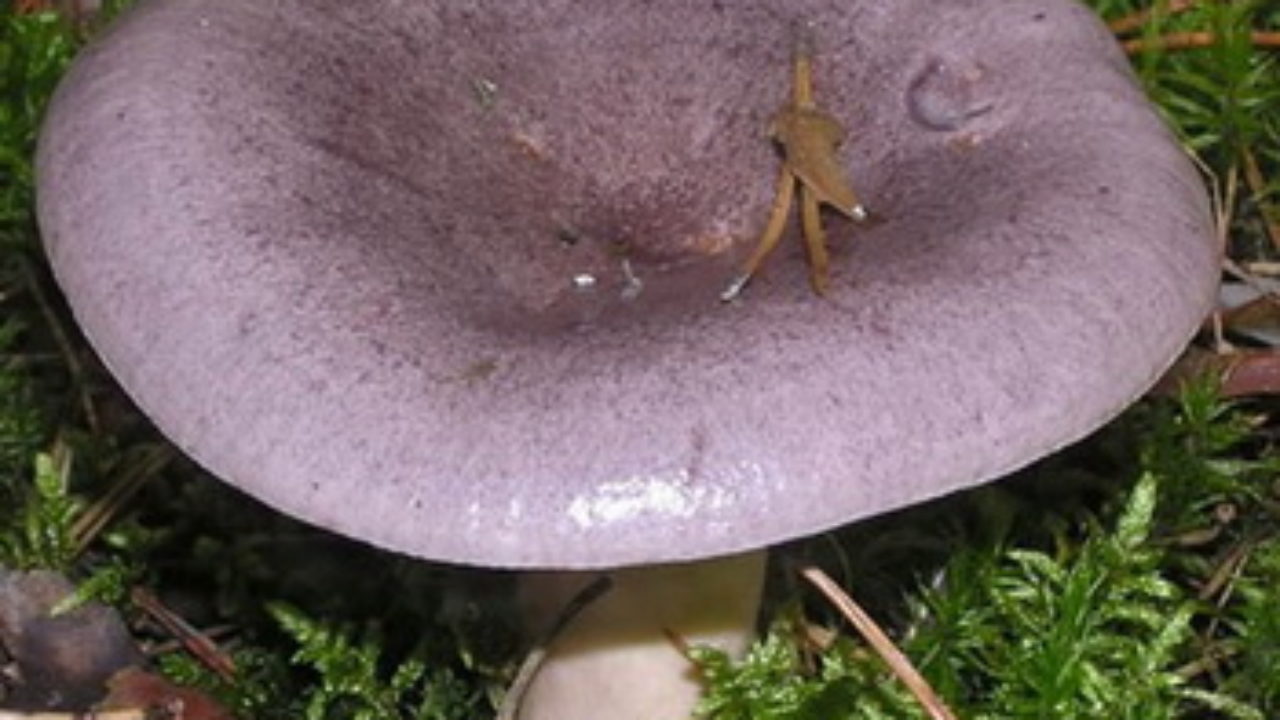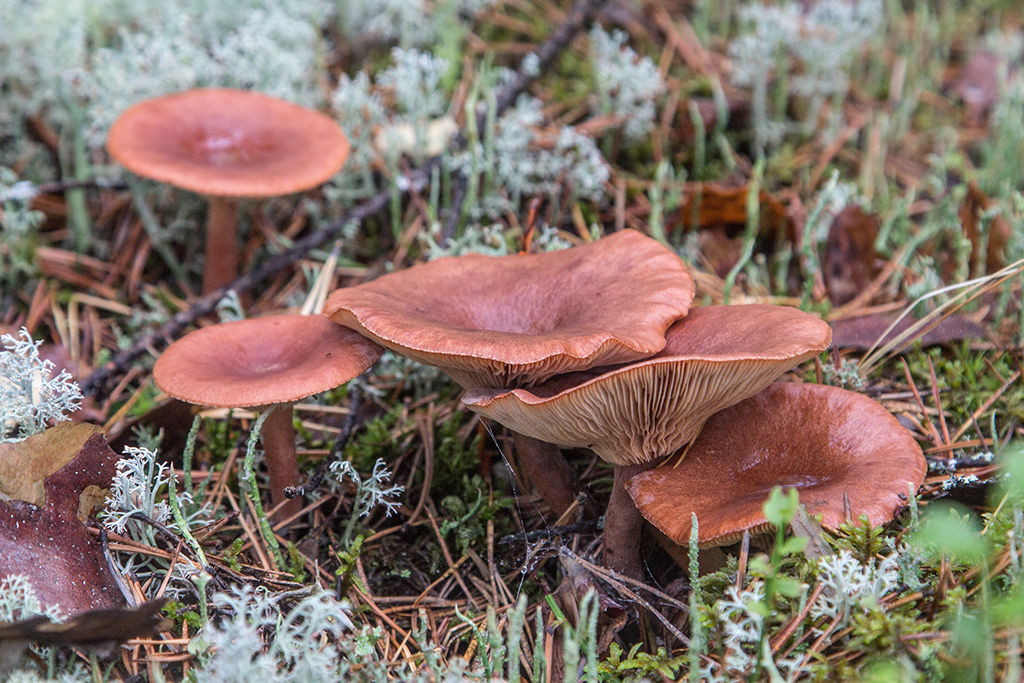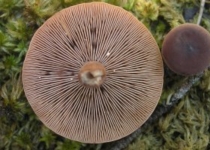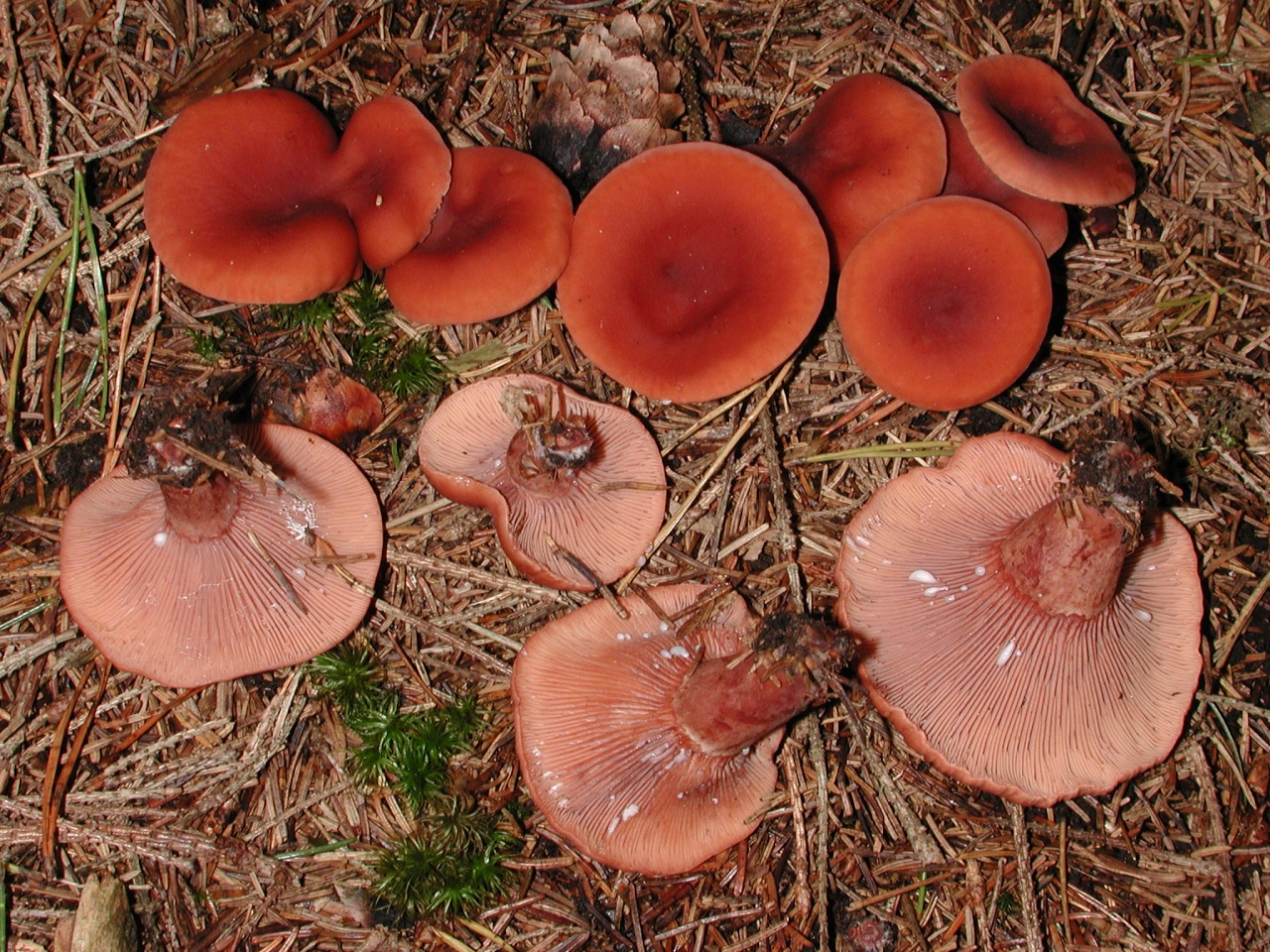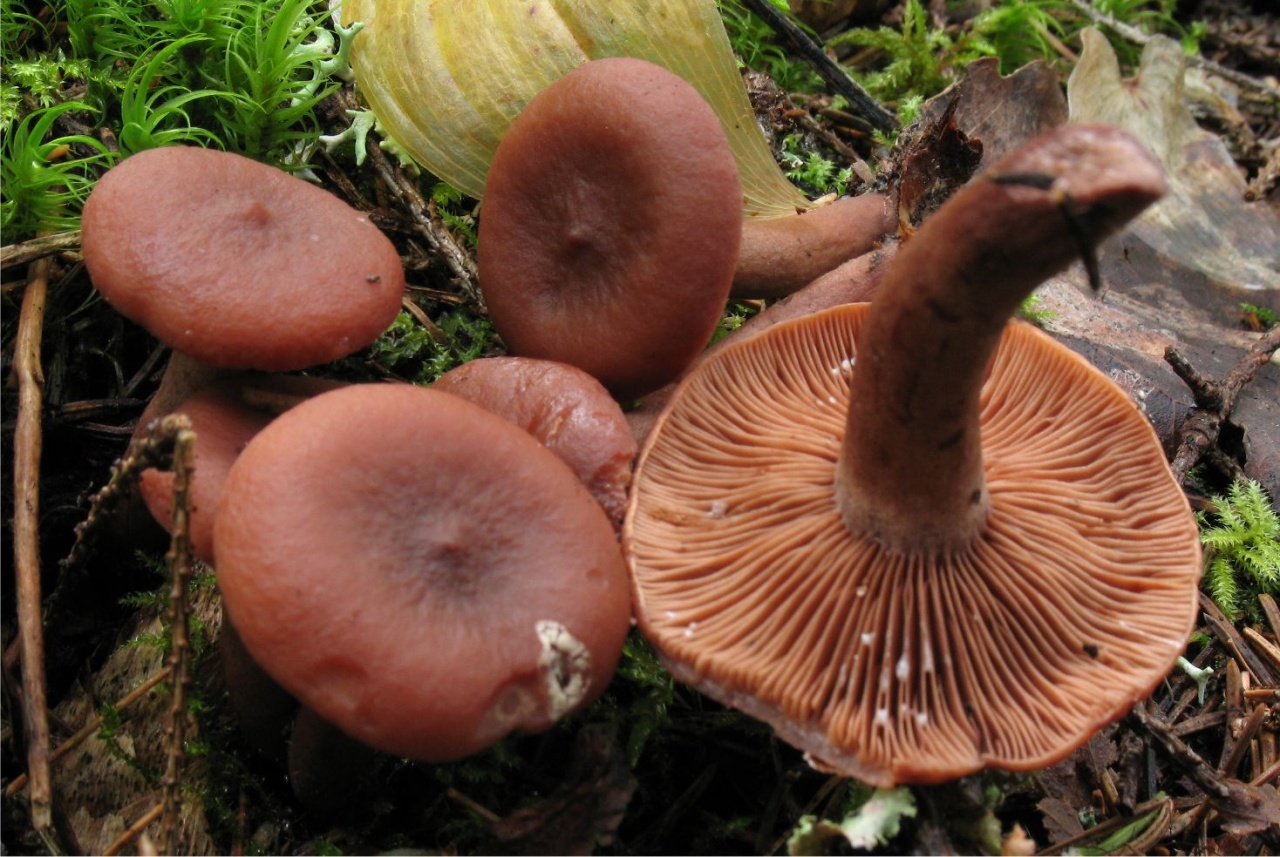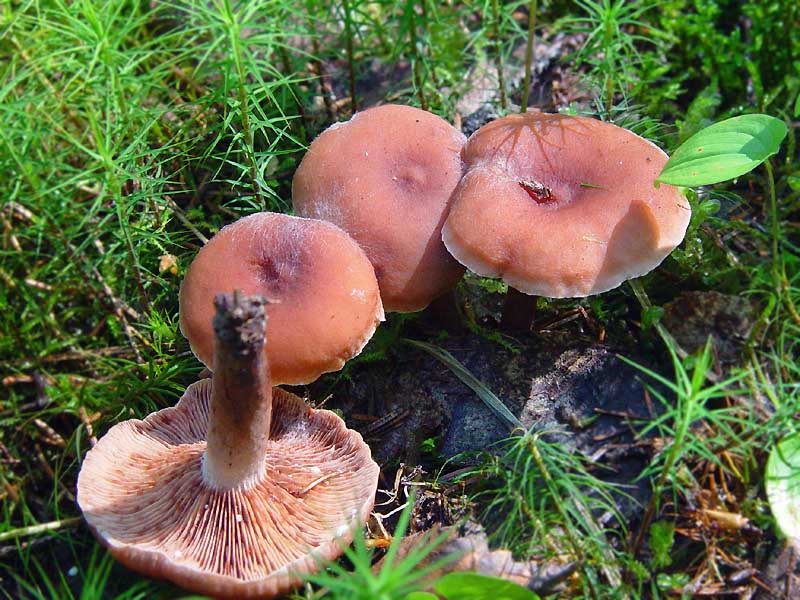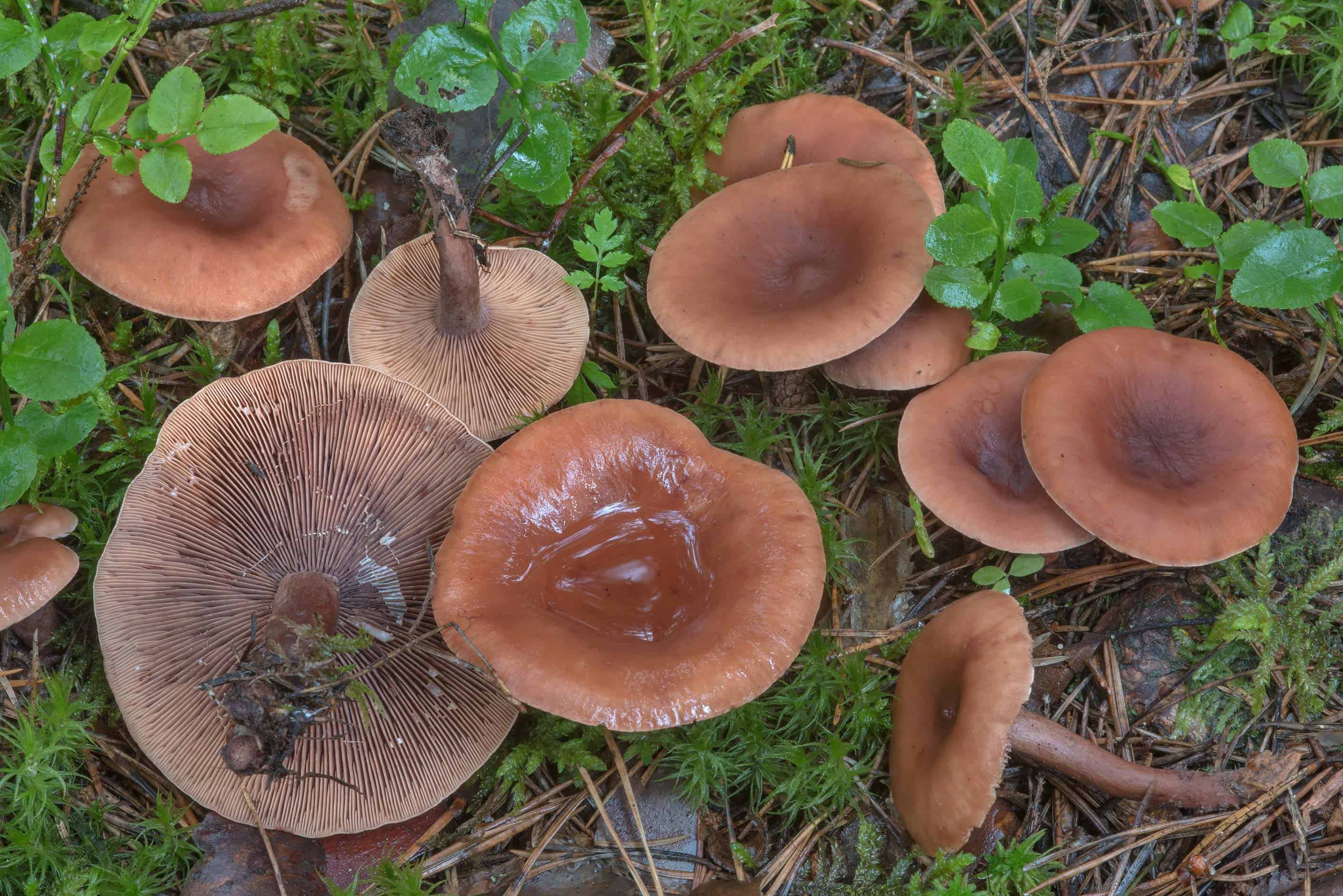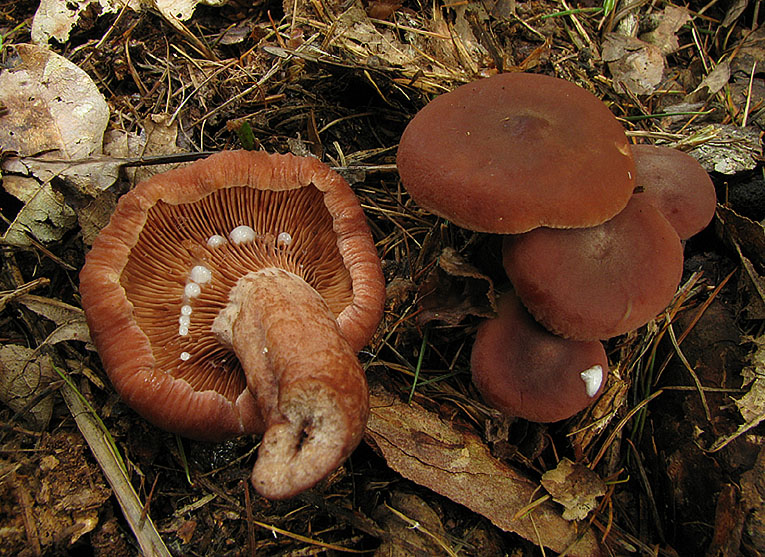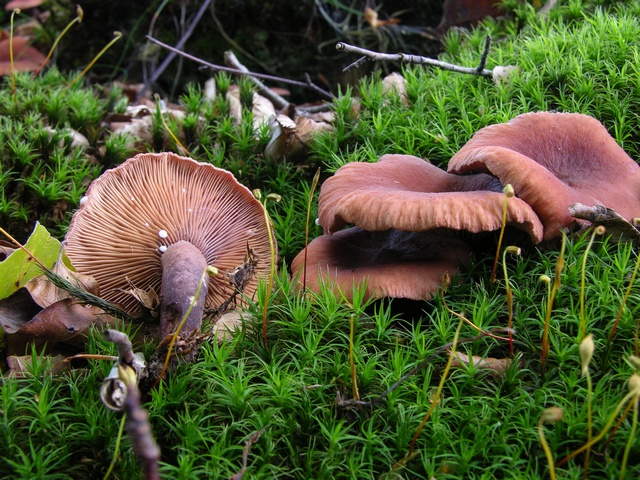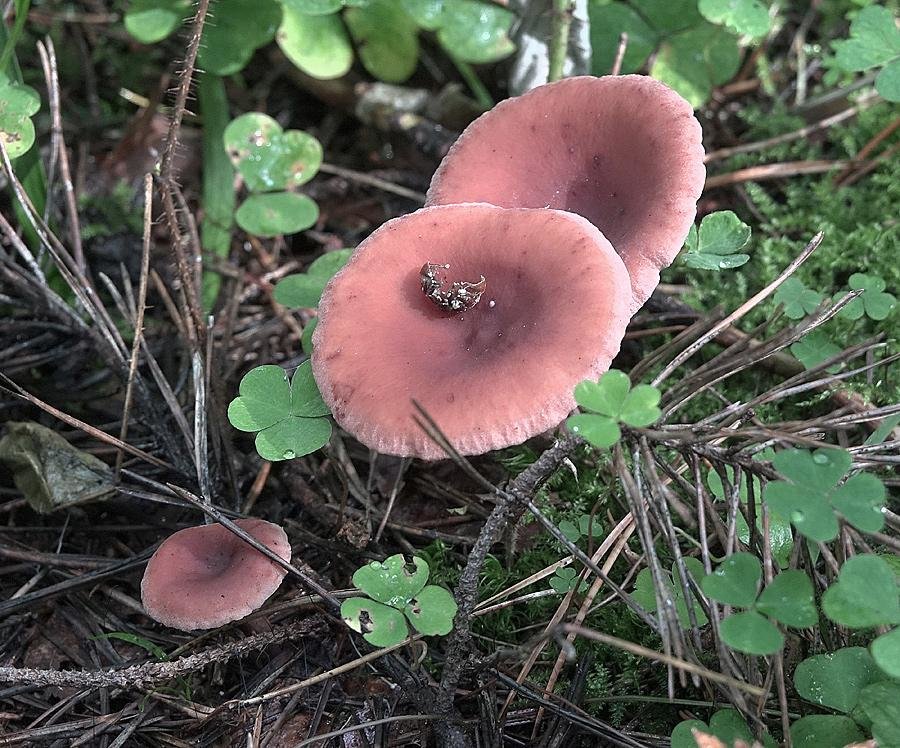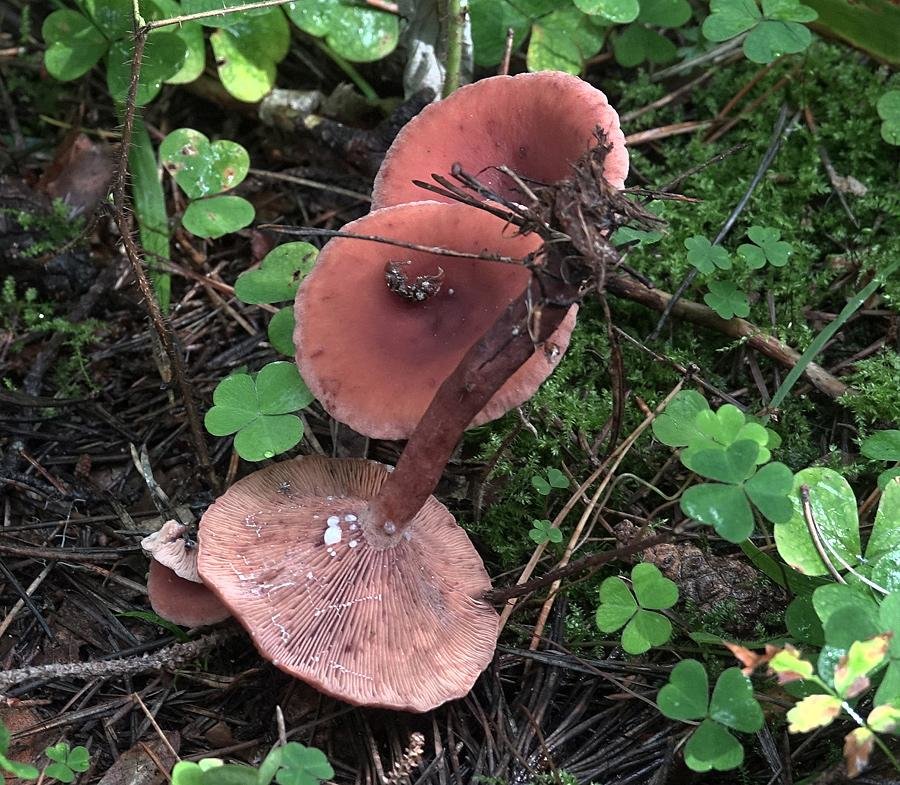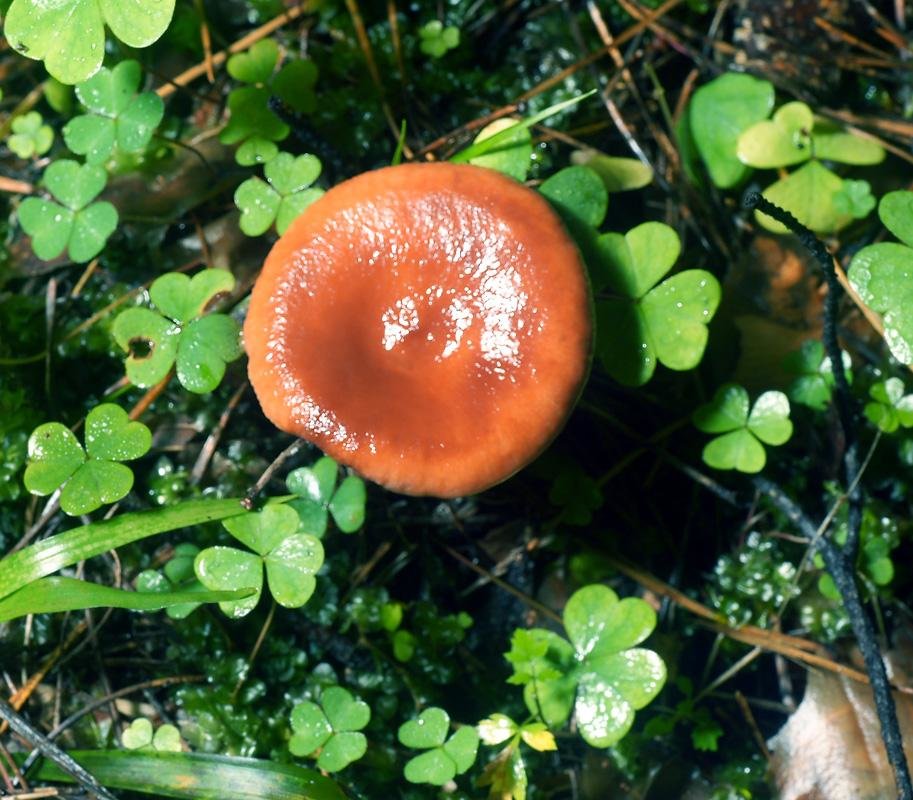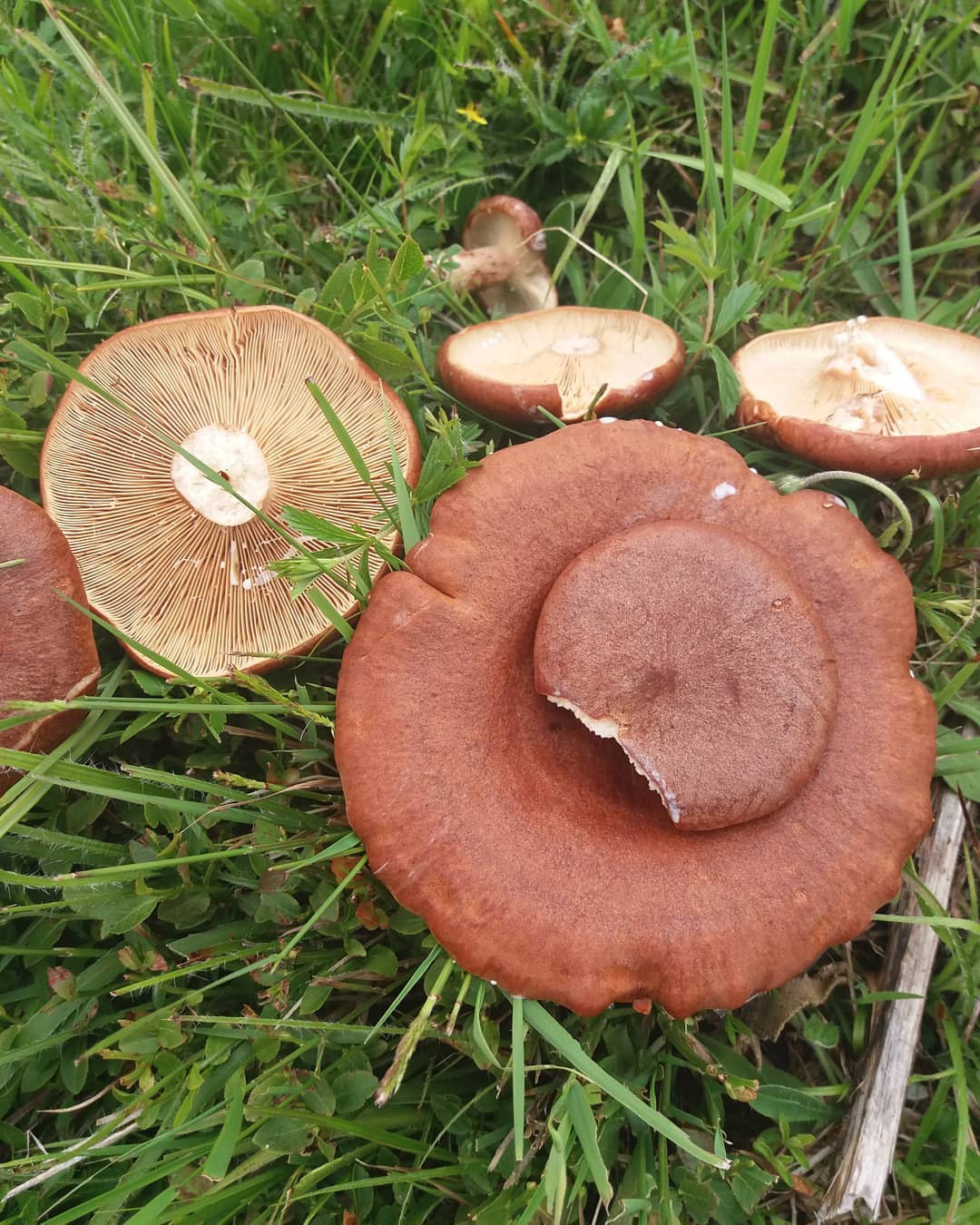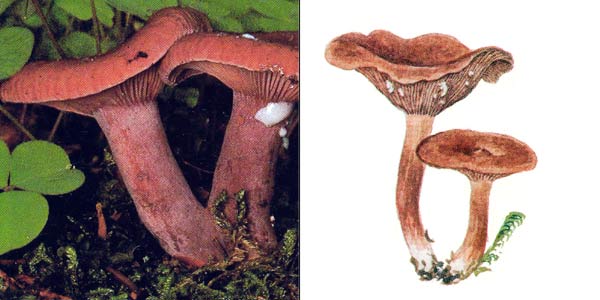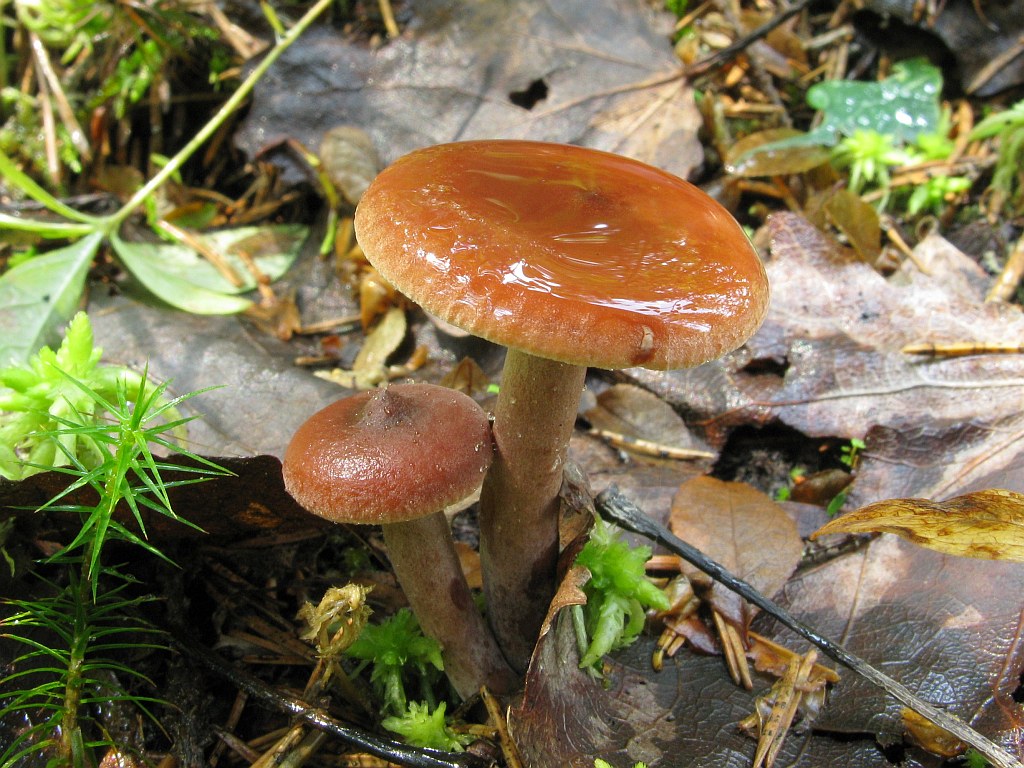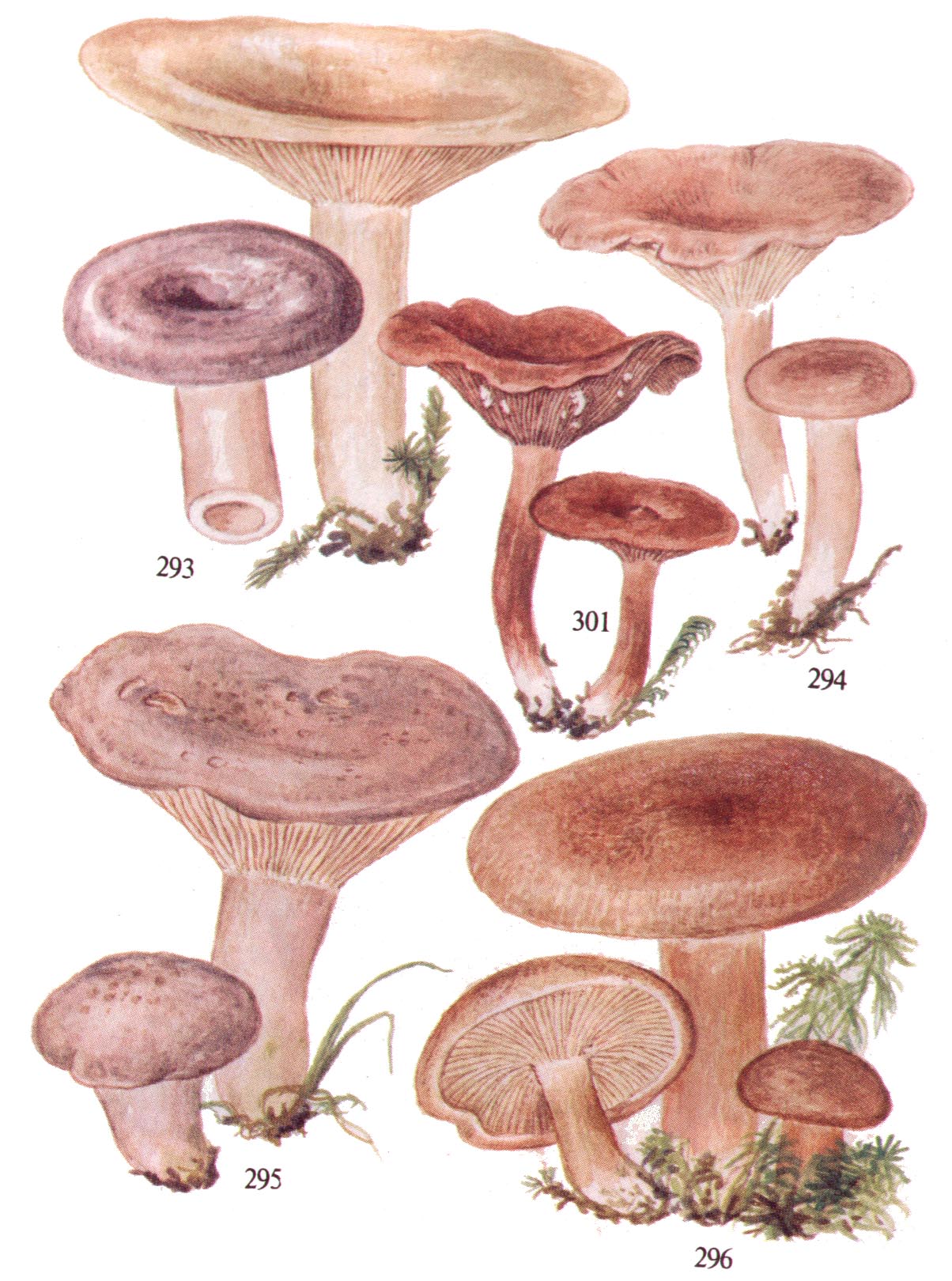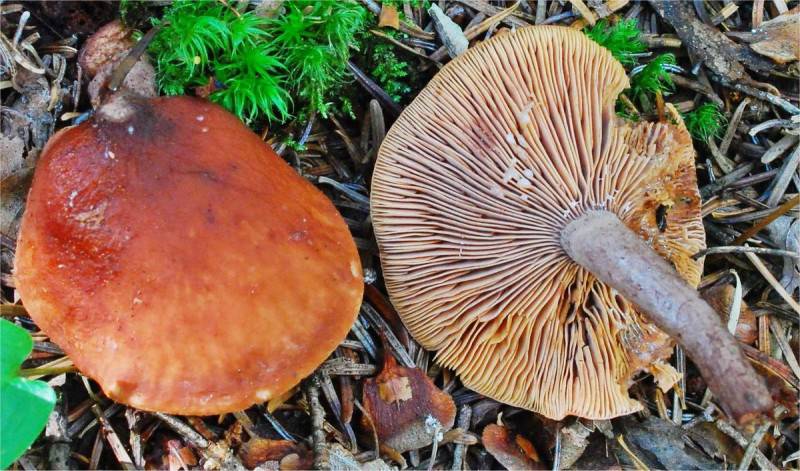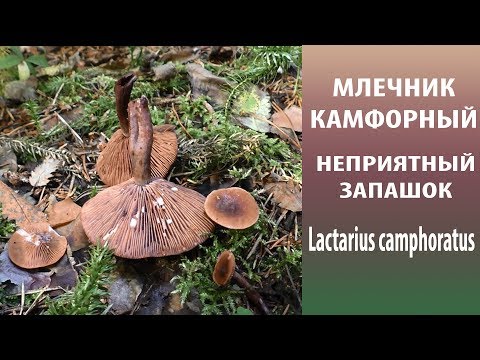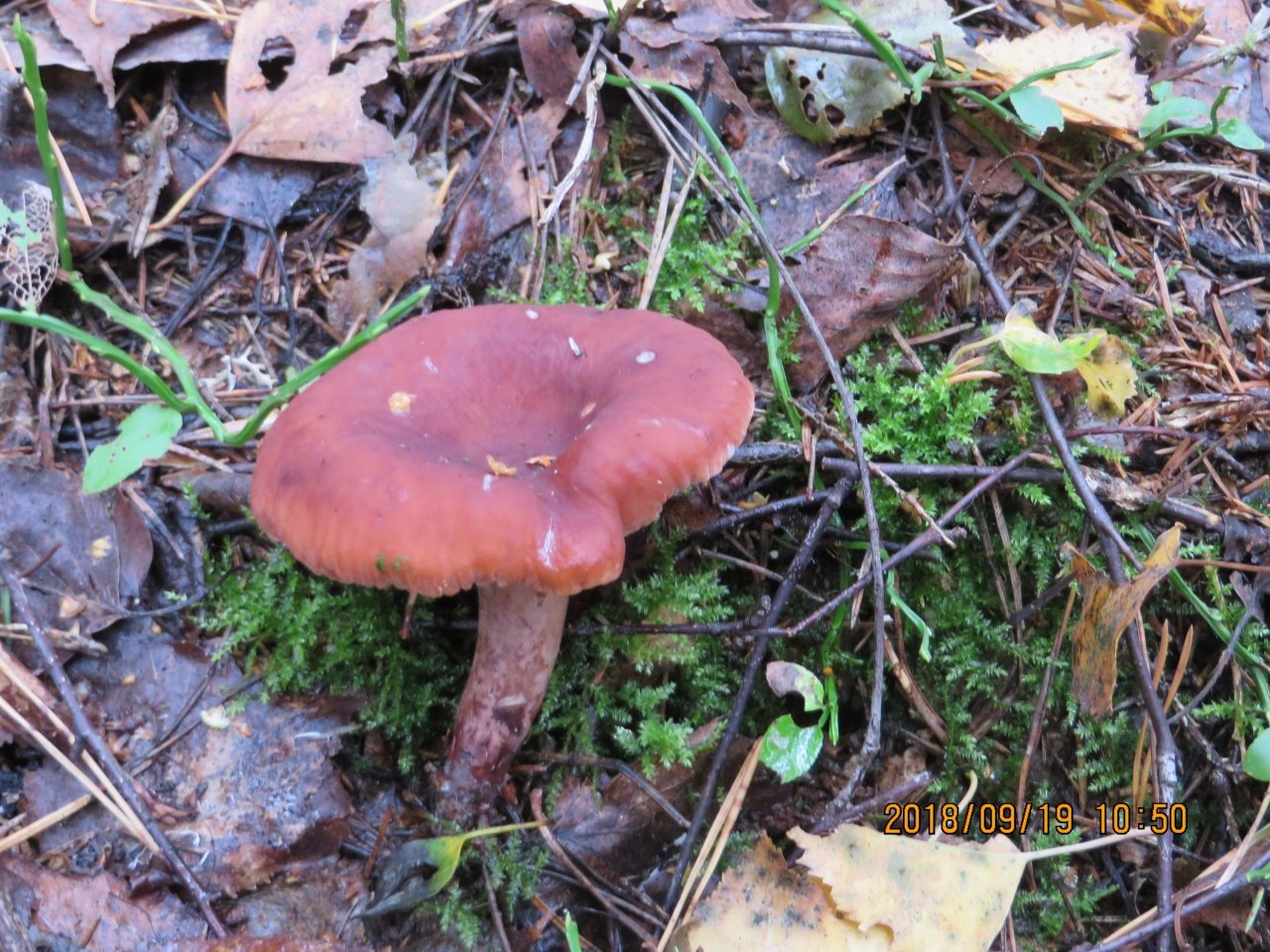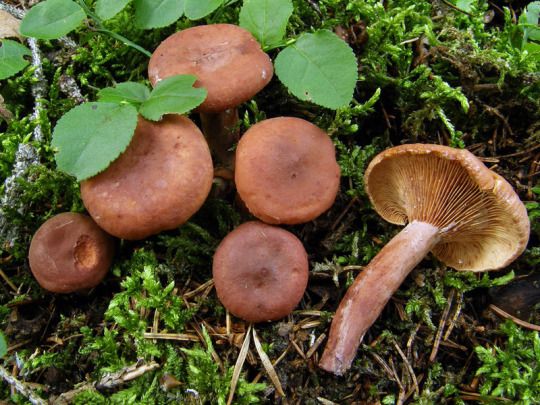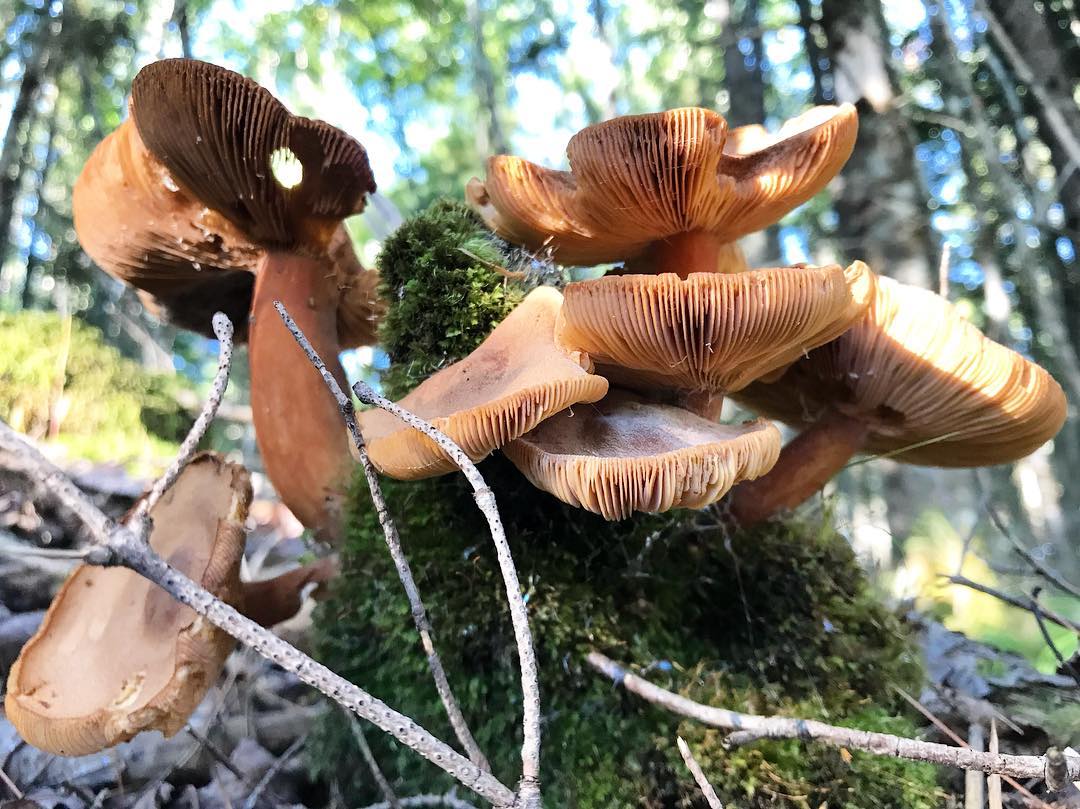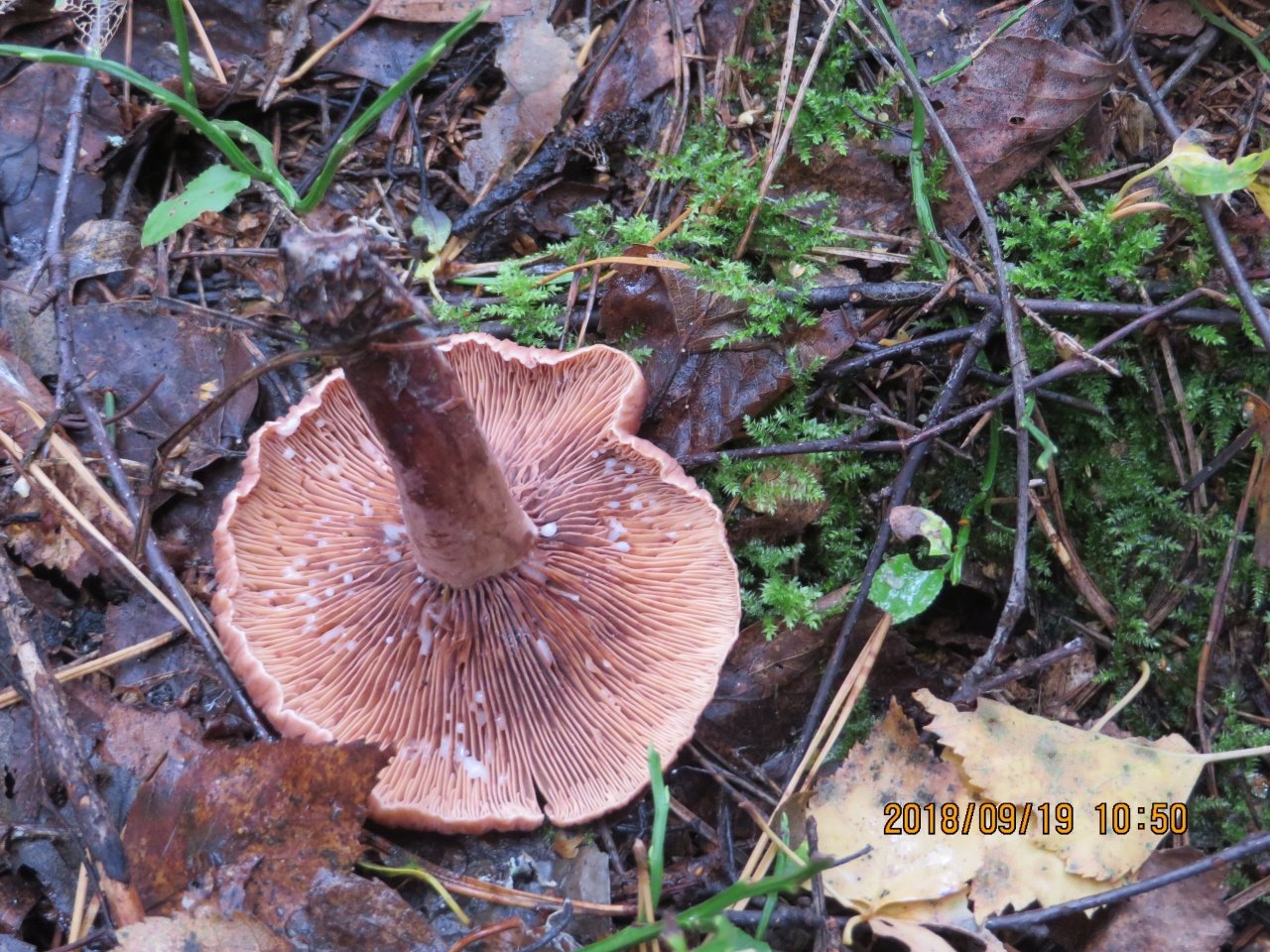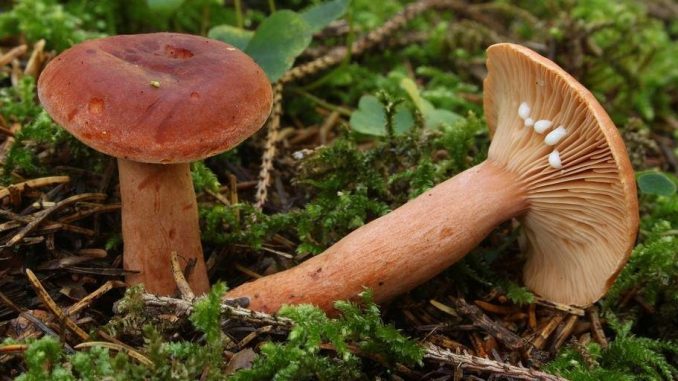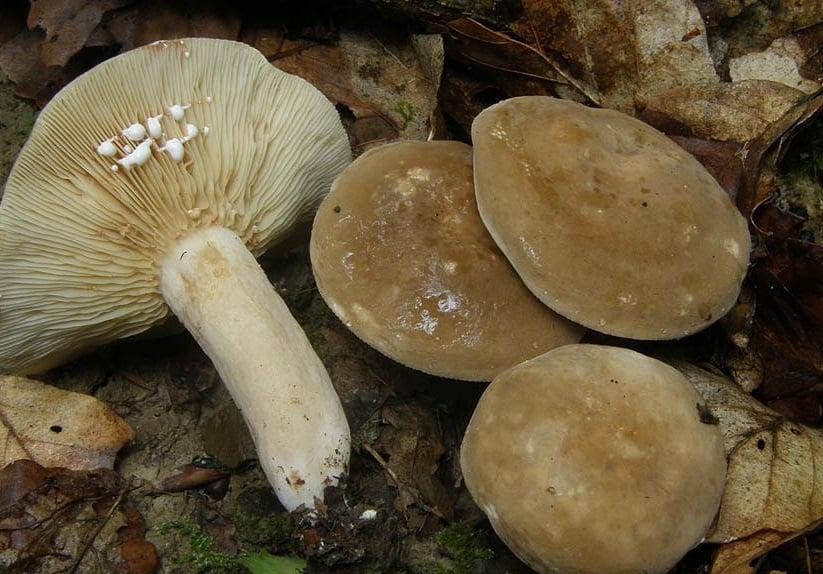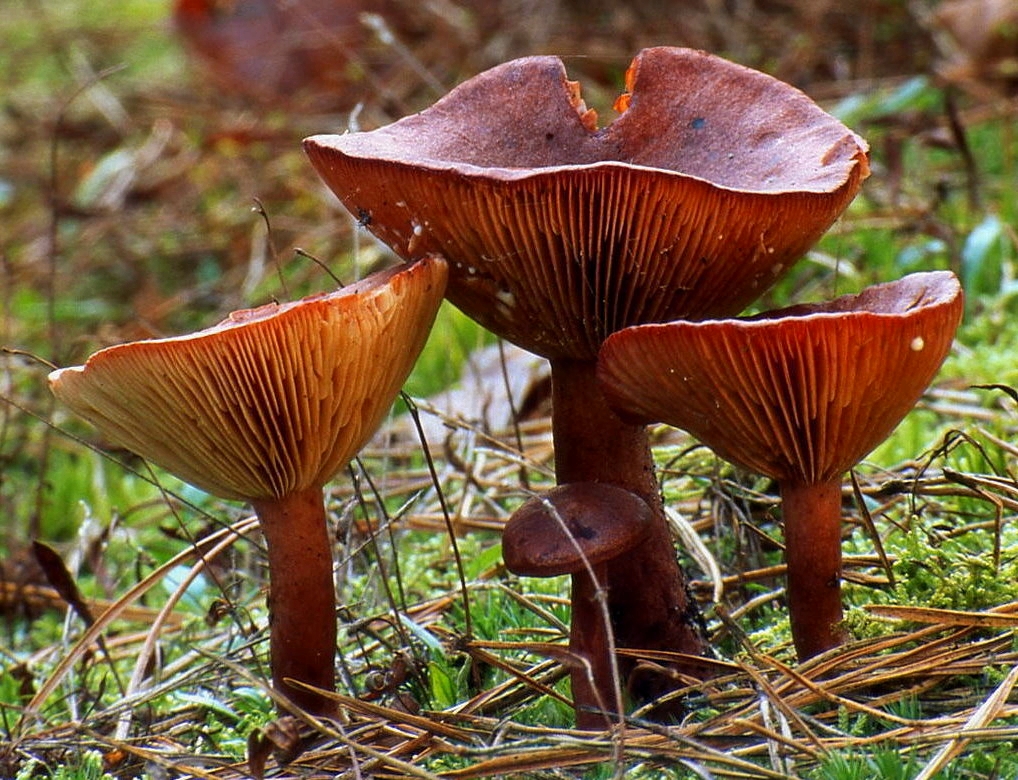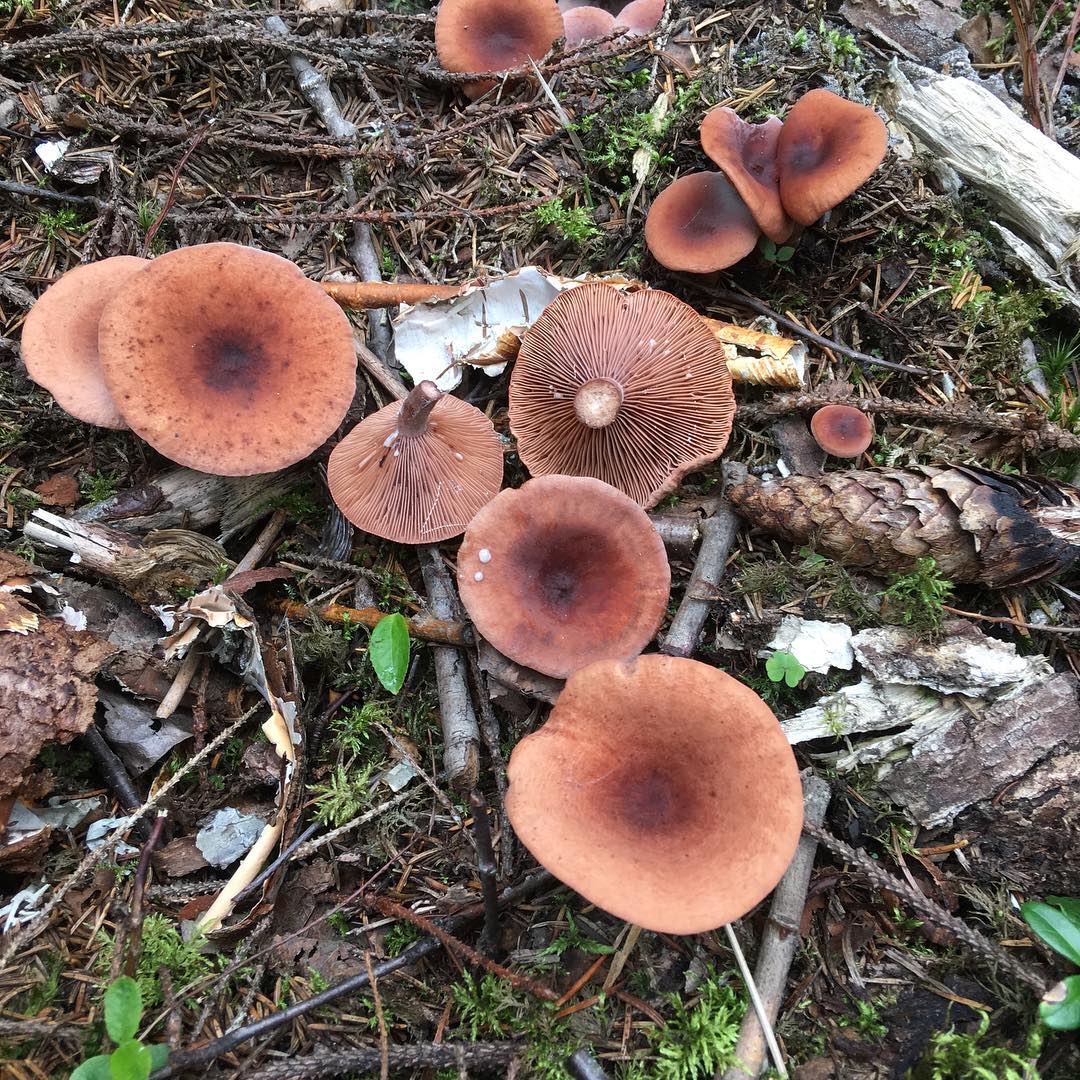Description of the camphor lactarius
The diameter of the cap ranges from 3 to 6 centimeters. The shape of the cap is convex at a young age, and the edges are bent, later the cap changes to open or even depressed, while a tubercle remains in the center, and the edge becomes ribbed.

The hat is covered with a matte red-brown or dark brown skin. The plates are slightly sloping down, often spaced and wide enough. The color of the plates is reddish or ocher. Over time, the plates become covered with rusty spots and darken.
The color of the spore powder is cream or white. The length of the leg is 3-5 centimeters, and its thickness reaches 0.6 centimeters. The leg is cylindrical in shape, it can taper towards the base. The structure of the stem is fragile and thin. The color of the leg is the same as that of the cap, but it can be a shade lighter. In older mushrooms, the stem becomes darker. The upper part of the leg is velvety, while the bottom is smooth. The flesh of the leg is brittle, friable, red-brown in color. The smell of the pulp is unpleasant, reminiscent of camphor.
Milky juice from these mushrooms is released abundantly, its consistency is watery, and its color is white, it does not change in air.

Places of growth of camphor lactarius
These fungi grow in loose and acidic soils, on decaying wood and mossy surfaces. Camphor millers can be found in mixed, coniferous and deciduous forests growing in the temperate zone of Eurasia, in addition, they grow in North America.
Camphor millers form mycorrhiza with a variety of conifers, less often deciduous trees are used for this. The season for the yield of camphor lactates is August-October.
Edible camphor lactic acid
Camphor millers are considered edible mushrooms, but of low quality, since they have a specific smell. The pulp has a bland or sweet taste. These mushrooms are suitable for eating salted, they can also be dried and made into a seasoning.

Other mushrooms of this genus
Brownish milky is a conditionally edible mushroom. The diameter of the brownish lactarius cap is 4-10 centimeters. The structure of the cap is thin and brittle. At first, the shape of the cap is convex, and later it changes to a funnel-shaped one with a depression in the center. The surface of the cap is velvety and dry. The color of the cap ranges from brown-ocher and chocolate to off-white. In older mushrooms, the color becomes lighter, and blurred spots appear. The height of the leg varies from 4 to 10 centimeters with a diameter of 1-1.5 centimeters. The shape of the leg is cylindrical, its surface is velvety, and its color is from light brown to almost white.
The pulp is white, dense, while fragile, it turns pink on the cut. The pulp has a pungent taste and faint odor. The fruiting season of the brownish lactarius is July-September. They bear fruit in groups or separately. These fungi form mycorrhiza with beech and oak. They grow in deciduous forests, common in Europe.

The lilac miller has a cap 4-8 centimeters in diameter. At first, the cap is flat, but as it ages, it becomes funnel-shaped. The peel is pubescent, lilac-pink in color. The milky juice is acrid, white, excreted abundantly. The plates grow to the peduncle, often located, of an ocher color with a pinkish tinge.
The leg length ranges from 3 to 8 centimeters, and the thickness reaches 1.2 centimeters. The shape of the leg is curved, cylindrical. Inside the leg is hollow, and outside the surface is mealy. Round spores with ornament. Spore white powder.
Lilac miller is a conditionally edible mushroom, it can be salted and combined with other types of mushrooms. The pulp is white-pink in color with a characteristic mushroom aroma. Lilac lilacs grow in humid areas, most often they can be found under alder. These mushrooms prefer coniferous and deciduous forests.Lilac lilacs bear fruit from September to October.

Description and characteristics
Classically, the oak milkman is a member of the russula family and the genus Millechnikovye, which means that its closest relatives are mushrooms, mushrooms and mushrooms, which are more in demand among mushroom pickers.
People who call a mushroom use synonyms:
- the milkman is neutral;
- the milkman is calm;
- oak mushroom;
- poddubnik;
- baseball.
Professional mycologists are closer to the Latin name Lactarius quietus.
Outwardly, the oak milkman is rather unsightly, perhaps this explains the fact that he is so often ignored.
The hat is 4-8 cm in diameter. In a young mushroom, it has a flat-convex shape, but over time it becomes funnel-shaped. The color is brownish-cream, concentrated fuzzy circles of a darker shade diverge along the surface of the cap. The skin is dry, brownish in color, with darker concentric, sometimes indistinct areas.
The hymenophore, that is, the lower part of the cap, is lamellar, light cream in color, darkens to brick-brown with age. The plates are frequent, wide, descending along the pedicle. At the break, the pulp secretes milky juice (hence the name of the genus of mushrooms), which does not change its color when oxidized in air. Has a specific odor reminiscent of dry grass.
The leg is thin, cylindrical, from 3 to 6 cm high. The color does not differ from the cap.
A bit of history
For the first time the genus Lactarius (from Latin "milk") was described in 1797 by the Dutch mycologist H. G. Person, who included 6 species of lamellar mushrooms. Four years later, British botanist S. F. Gray doubled that number.
Edible brownish lactarius
Sooty milky - more edible than other milky. His juice is not too bitter, in addition, there are no extraneous unpleasant odors, so there is no need for prolonged boiling and soaking. The consistency of the brownish lactici is strong, so they can be salted together with volushki, chernushki and other "noble" milkers.
Other mushrooms of this genus
Miller stunted or tender milk mushroom is a conditionally edible mushroom used mainly for pickling. The diameter of the cap of this mushroom is 3-5 centimeters. The shape of the caps is initially convex, but in mature specimens it becomes prostrate.
The color of the cap is red or buffy-brick. The height of the leg is small - 2.5 centimeters, with a thickness of 0.4-0.8 centimeters. The leg is loose in structure, and becomes hollow with age. The color of the leg is the same as that of the cap.
Stunted millers settle on mossy surfaces in damp places. They grow in mixed and deciduous forests. They begin to bear fruit in July and continue until September.
Mayor's Miller is an edible mushroom that can be used for food in any form. The diameter of the cap of the lactic Mayor ranges from 2.5 to 12 centimeters. The color of the cap varies from clay-cream to light cream. The leg reaches a height of 1.5-4 centimeters, while its diameter is 0.6-1.5 centimeters. The leg looks like a cylinder, it feels dry and smooth to the touch.
These mushrooms grow, as a rule, in deciduous forests. They meet in small groups. Mayor's Millers are common in Europe, Asia and Morocco. They bear fruit from September to October. These mushrooms are found on the pages of the Red Data Books of several countries: Denmark, Austria, France, Estonia, Switzerland, Norway, Sweden and Germany.

